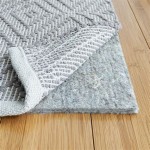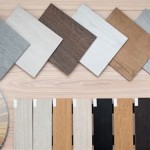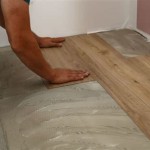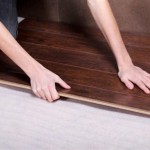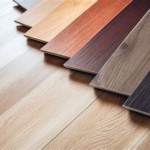How To Repair Termite Damaged Wood Floors
Termite infestations can be a homeowner's nightmare, particularly when they target wooden structures like floors. Recognizing and addressing termite damage promptly is crucial to preventing extensive structural issues and costly repairs. This article provides a comprehensive guide on how to identify, assess, and repair termite-damaged wood floors.
The initial step in addressing termite damage is accurate identification. Termites are often silent destroyers, working from the inside out. While visible signs may be minimal initially, understanding what to look for can help you detect an infestation early.
One of the most common indications is the presence of mud tubes. These are small, pencil-sized tunnels that termites construct to travel above ground, protecting themselves from predators and maintaining a humid environment. These tubes are often found along foundation walls, near plumbing, or in crawl spaces. If you find these tubes, disturbing them will reveal whether they are actively being used. Live termites within the tubes indicate an ongoing infestation.
Another sign is the appearance of frass, or termite droppings. This looks like small, granular pellets, often found near termite entry points. The color of the frass will vary depending on the type of wood the termites are consuming. Accumulations of frass are a clear indicator of termite activity.
Damaged wood itself can also provide clues. Termite-damaged wood often sounds hollow when tapped. Probing the wood with a screwdriver or awl may reveal soft spots or tunnels within the wood. Unlike water damage, which often causes widespread discoloration, termite damage tends to follow the grain of the wood, creating distinct patterns of destruction.
Furthermore, keep an eye out for swarming termites. These are reproductive termites that emerge from their colonies to mate and establish new colonies. Swarming typically occurs in the spring, and the presence of swarming termites, or shed wings left behind after swarming, is a strong indication of a nearby termite colony.
Once termite damage is suspected, a thorough assessment is necessary to determine the extent of the problem. This involves a detailed inspection of the affected areas, as well as surrounding structures.
Begin by visually inspecting the wood floor, paying close attention to areas where the floor meets the walls, around plumbing fixtures, and in corners. Use a flashlight to illuminate dark or hard-to-reach areas. Look for any signs of damage, such as buckling, warping, or discoloration of the wood.
Next, use a screwdriver or awl to probe the wood. Insert the tool into suspected areas of damage and apply gentle pressure. If the wood is soft or easily penetrated, it is likely to be damaged by termites. Continue probing in adjacent areas to determine the extent of the damage.
If the damage appears to be extensive, it may be necessary to remove sections of the flooring to inspect the subfloor and joists beneath. This will provide a clearer picture of the overall structural integrity of the floor and identify any hidden areas of infestation. This step may require the assistance of a professional contractor, particularly if you are not experienced in flooring removal.
Document the extent of the damage with photographs or videos. This will be helpful when consulting with pest control professionals and contractors, and it can also be useful for insurance claims.
The location of the termite damage can also provide clues about the source of the infestation. Termites typically enter buildings through contact with the ground, so damage near the foundation is common. However, they can also enter through cracks in the foundation, around plumbing penetrations, or through wood that is in direct contact with the soil.
Key Point 1: Identifying the Extent of Damage
Accurately assessing the extent of damage is crucial for determining the appropriate course of action. This involves not only identifying visible signs of damage but also probing for hidden damage beneath the surface. A thorough inspection will help you understand the severity of the infestation and determine whether professional intervention is necessary.
Once the extent of termite damage has been assessed, the next step is to eradicate the termites. This is best left to a qualified pest control professional, as they have the knowledge, experience, and access to specialized treatments to effectively eliminate the infestation.
There are several methods for treating termites, including liquid termiticides, termite baits, and fumigation. Liquid termiticides are applied to the soil around the perimeter of the building, creating a barrier that prevents termites from entering. Termite baits are placed strategically around the property, attracting termites and delivering a slow-acting poison that they carry back to the colony. Fumigation involves sealing the building and releasing a fumigant to kill all termites within the structure. The choice of treatment method will depend on the type of termites, the extent of the infestation, and the specific characteristics of the property.
Before any treatment is applied, it is important to address any moisture problems that may be attracting termites. Termites thrive in damp environments, so eliminating sources of moisture such as leaky pipes, poor drainage, and inadequate ventilation can help prevent future infestations. Repair any leaks, improve drainage around the foundation, and ensure that crawl spaces are properly ventilated.
After the termite treatment has been completed, it is important to monitor the property for any signs of recurring infestation. This can be done by regularly inspecting the wood floors, looking for mud tubes, frass, or other signs of termite activity. Consider scheduling annual termite inspections with a pest control professional to ensure that any new infestations are detected and treated promptly.
With the termite infestation addressed, you can begin repairing the termite-damaged wood floors. The repair process will depend on the extent of the damage and the type of flooring material.
For minor damage, such as small holes or surface imperfections, wood filler can be used to fill the gaps and restore the appearance of the floor. Choose a wood filler that is compatible with the type of wood flooring and stain. Apply the wood filler according to the manufacturer's instructions, allowing it to dry completely before sanding and staining to match the surrounding floor.
For more extensive damage, such as rotted or weakened boards, it may be necessary to replace the affected sections of the floor. Carefully remove the damaged boards, being careful not to damage the surrounding flooring. Cut replacement boards to the same size and shape as the originals, using a saw and other woodworking tools. Install the new boards using nails or screws, ensuring that they are securely attached to the subfloor. Sand the new boards smooth and finish them to match the existing floor.
In some cases, the damage may be so extensive that it is necessary to replace the entire floor. This is a more involved project that requires removing all of the existing flooring, preparing the subfloor, and installing new flooring. While this can be a significant undertaking, it may be the best option for ensuring the long-term structural integrity of the floor.
When replacing flooring, consider using termite-resistant materials such as treated lumber or composite decking. These materials are less susceptible to termite damage, providing added protection against future infestations.
Key Point 2: Proper Termite Eradication
Effective termite eradication is paramount before any repair work begins. Simply patching or replacing damaged flooring without addressing the underlying infestation is a temporary solution that will ultimately lead to further damage. Engaging a qualified pest control professional is essential for ensuring that the termites are completely eliminated.
After the repairs are completed, it is important to take steps to prevent future termite infestations. This includes maintaining a dry environment around the foundation, removing any wood that is in direct contact with the soil, and scheduling regular termite inspections.
Ensure that the soil around the foundation slopes away from the building to prevent water from pooling near the foundation. Clear away any vegetation that is touching the building, as this can provide a pathway for termites to enter. Inspect and repair any cracks in the foundation or around plumbing penetrations. Consider installing a termite barrier around the perimeter of the building to prevent termites from entering.
Store firewood and lumber away from the house, preferably on a concrete slab. Avoid stacking wood against the foundation, as this can create a moist environment that is attractive to termites. Regularly inspect the wood for signs of termite damage.
Schedule annual termite inspections with a pest control professional to ensure that any new infestations are detected and treated promptly. A professional inspection can identify early signs of termite activity that may not be visible to the untrained eye.
Furthermore, consider the type of wood used in your flooring. Some wood species are naturally more resistant to termites than others. Redwood, cedar, and cypress are known for their natural resistance to termites and can be a good choice for flooring in areas where termite infestations are common.
When purchasing lumber for repairs or new construction, look for wood that has been treated with a termite-resistant preservative. These preservatives can help protect the wood from termite damage for many years.
Maintaining a vigilant approach is key to preventing future termite problems. Regularly inspecting your property, addressing moisture issues, and taking preventative measures can help protect your wood floors from termite damage and ensure the long-term health of your home.
Key Point 3: Implementing Preventative Measures
Preventing future termite infestations is just as important as repairing existing damage. By implementing preventative measures, such as maintaining a dry environment, removing wood-to-soil contact, and scheduling regular inspections, homeowners can significantly reduce the risk of future termite problems.
Repairing termite-damaged wood floors may seem daunting, but by following these steps, homeowners can effectively address the problem and restore the integrity of their floors. Early detection, professional termite eradication, thorough repairs, and preventative measures are essential for protecting your home from these destructive pests.

How To Fix A Termite Damaged Hardwood Floor Root Simple

Repair Termite Hole In Hardwood Floor Hometalk

How Do You Repair Termite Damage El Gato Painting

Termite Damage On Hardwood Floor Quickly Repaired

Termite Damage Repair For Floor Restoration

How To Fix A Termite Damaged Hardwood Floor Root Simple

A Little Hardwood Floor Repair The Space Between

Repair Hole In Damaged Hardwood Floor Slaughterbeck Floors Inc

Repair Hole In Damaged Hardwood Floor Slaughterbeck Floors Inc

Termite Damaged Boards Fullerton 1 22 2024 Refinishwoodfloors Woodfloors
See Also
